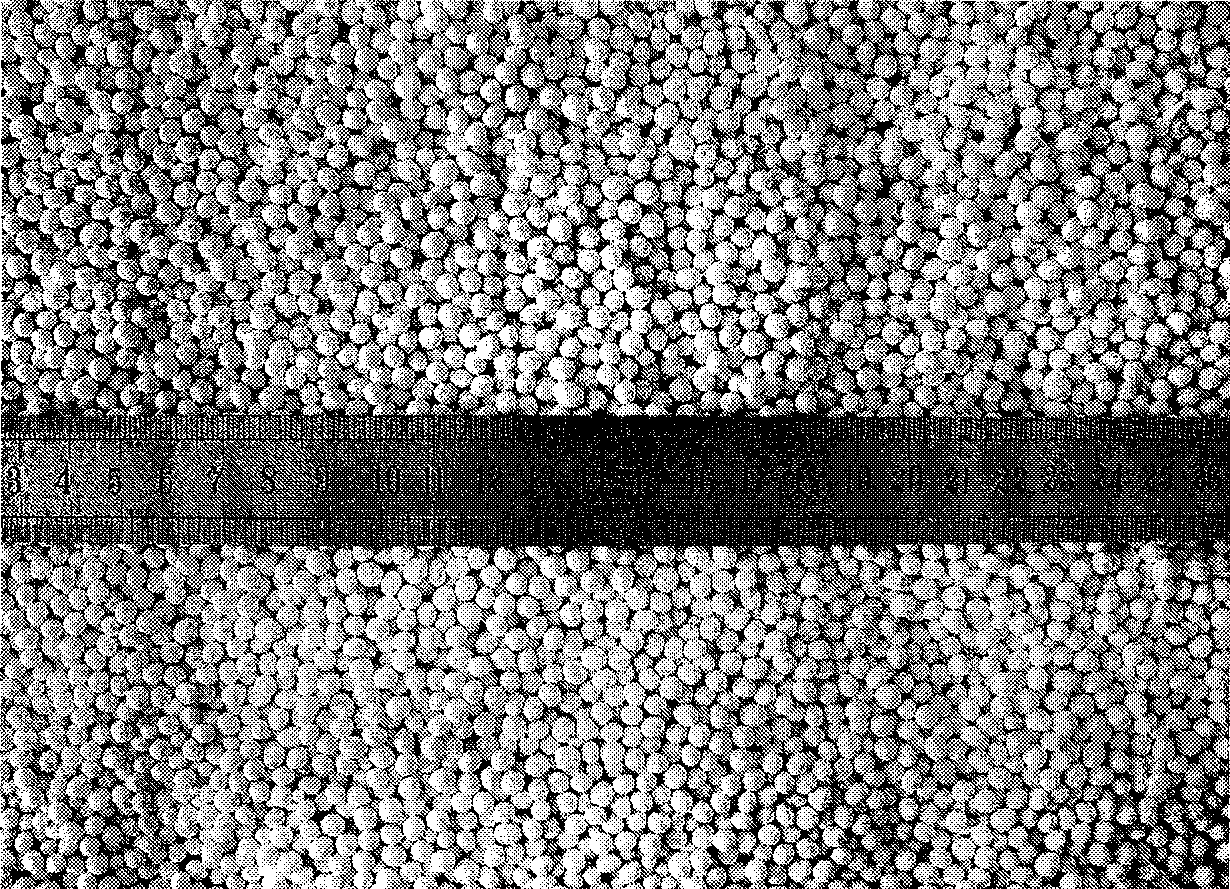Paecilomyces lilacinus and application
The technology of Paecilomyces lilacinus and inoculum is applied to the application field of Paecilomyces lilacinus and its inoculants for preventing and controlling plant root-knot nematode diseases, and can solve the problems of complicated preparation process, lack of preparations, and shelf life of biocontrol preparations. short and so on
- Summary
- Abstract
- Description
- Claims
- Application Information
AI Technical Summary
Problems solved by technology
Method used
Image
Examples
Embodiment 1
[0058] Example 1. Isolation and preservation of Paecilomyces lilacinus (P.lilacinus) FZ07-9F-5 CGMCC No.2780
[0059] Collect roots of tobacco root-knot nematode disease in Tadian, Eshan, Yunnan, wash the diseased roots with tap water for 3-5 minutes to remove the soil, then put the diseased roots under a dissecting microscope, pick out the oocysts with tweezers, and treat the oocysts with 1% sodium hypochlorite for 1 minute Disinfect the surface of oocysts and release nematode eggs, pass the sodium hypochlorite egg suspension through 200 μm and 30 μm mesh sieves respectively, rinse 3 times with sterilized distilled water to remove sodium hypochlorite, spread approximately every 100 eggs on a PDA plate, and observe the colonies every day The situation arises. Finally, a nematicidal fungal strain was isolated from the eggs of root-knot nematode, named FZ07-9F-5, which was deposited in the China Microorganism Culture Collection located in Datun Road, Chaoyang District, Beijing, ...
Embodiment 2
[0060] Embodiment 2, the cultivation of Paecilomyces lilacinus (P.lilacinus) FZ07-9F-5 CGMCC No.2780 and the preparation of its bacterial agent
[0061] 1. Cultivation of Paecilomyces lilacinus (P.lilacinus) FZ07-9F-5 CGMCC No.2780
[0062] 1. Test tube culture
[0063] Preparation of potato agar medium: 200g potatoes, 20g glucose, 16g agar, dilute to 1L with water, pH6-7.
[0064] Paecilomyces lilacinus (P.lilacinus) FZ07-9F-5 CGMCC No.2780 was inoculated on the potato agar medium in the test tube, and cultivated at 25°C for 72-96h to obtain activated Paecilomyces lilacinus ( P. lilacinus) FZ07-9F-5 CGMCC No.2780.
[0065] 2. Expand training
[0066] Preparation of Paecilomyces lilacinus (P.lilacinus) FZ07-9F-5 CGMCC No.2780 special liquid medium: maltose (C source) 30g, yeast (N source) 6.12g, K 2 HPO 4 1g, MgSO 4 0.5g, KCl 0.5g, FeSO 4 0.01g, ZnSO 4 ·7H 2 O 10mg, dilute to 1L with water, pH6-7.
[0067] Paecilomyces lilacinus (P.lilacinus) FZ07-9F-5 CGMCC No.278...
Embodiment 3
[0076] Embodiment 3, the cultivation of Paecilomyces lilacinus (P.lilacinus) FZ07-9F-5CGMCC No.2780 and the preparation of its bacterial agent
[0077] 1. Cultivation of Paecilomyces lilacinus (P.lilacinus) FZ07-9F-5 CGMCC No.2780
[0078] 1. Test tube culture
[0079] Preparation of potato agar medium: 200g potatoes, 20g glucose, 16g agar, dilute to 1L with water, pH6-7.
[0080] Paecilomyces lilacinus (P.lilacinus) FZ07-9F-5 CGMCC No.2780 was inoculated on the potato agar medium in a test tube, and cultured at 25°C for 72 hours to obtain activated Paecilomyces lilacinus (P. lilacinus) FZ07-9F-5CGMCC No.2780.
[0081] 2. Expand training
[0082] Preparation of special liquid medium for Paecilomyces lilacinus (P.lilacinus) FZ07-9F-5 CGMCC No.2780: maltose 20g, yeast 5g, K 2 HPO 4 0.5g, MgSO 4 0.1g, KCl 0.1g, FeSO 4 0.001g, ZnSO 4 ·7H 2 O5mg, dilute to 1L with water, pH6-7.
[0083] Inoculate Paecilomyces lilacinus (P.lilacinus) FZ07-9F-5 CGMCC No.2780 through step ...
PUM
 Login to View More
Login to View More Abstract
Description
Claims
Application Information
 Login to View More
Login to View More - R&D
- Intellectual Property
- Life Sciences
- Materials
- Tech Scout
- Unparalleled Data Quality
- Higher Quality Content
- 60% Fewer Hallucinations
Browse by: Latest US Patents, China's latest patents, Technical Efficacy Thesaurus, Application Domain, Technology Topic, Popular Technical Reports.
© 2025 PatSnap. All rights reserved.Legal|Privacy policy|Modern Slavery Act Transparency Statement|Sitemap|About US| Contact US: help@patsnap.com



